#fall/winter 1966 67
Text

Haute Couture Collection Fall/Winter 1966-67
from left to right) Jean Patou, Christian Dior, Philippe Venet Photo J.P. Fouchet.
Collection Haute Couture Automne/Hiver 1966-67
de gauche à droite) Jean Patou, Christian Dior, Philippe Venet Photo J.P. Fouchet.
#collection haute couture#french designer#french style#fashion 60s#1966-67#fall/winter#automne/hiver#jean patou#christian dior#philippe venet#marc bohan#j.p.fouchet
12 notes
·
View notes
Text
The Basement Tapes
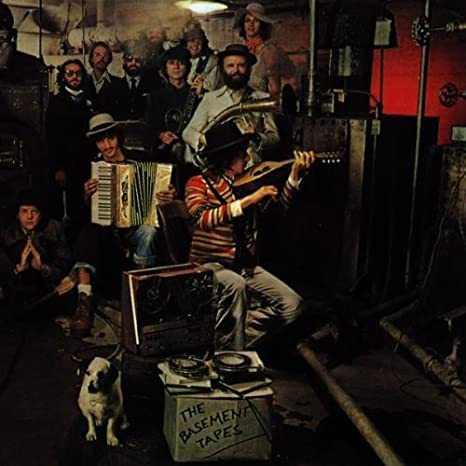
Released: 26 June 1975
Rating: 10/10
Following the motorcycle crash in 1966 that put an end to his ‘electric era’, Dylan and his new family moved to Woodstock, outside of the public eye. So to did his backing band, The Hawks later known as The Band, and during Bob’s recovery the musicians would meet up and record songs nearly every day for almost a year. Though recorded in 1967, there was no official release until 1975, when Bob finally gave permission to Robbie Robertson (guitarist for The Band), to select and mix tracks from these sessions. This review will be different to my others, as many of the songs do not require individual analysis, but rather I want to focus on three specific areas: the recording, Robbie’s choice of songs, and the highlights. The Basement Tapes is not only one of the best albums of the 20th century, strangely enough it’s also one of the most frustrating, due to an apathetic Bob and outside influence.
The Recording: I believe the recording sessions came about due to two very different reasons. The first is because Bob used it as his therapy. The motorcycle crash put his lifestyle into perspective and he morphed into a brand new man, as discussed in my ‘John Wesley Harding’ post. Gone were the days of acid and avant-garde, hanging out in New York’s high society art scene and facing down an audience of former fans and folk fanatics. He now chose anonymity, a simpler family life, and a return to less ‘controversial’ music. You only need to see his physical change from 1966 to ‘67 to see that this is not the same person who was booed at the Free Trade Hall. By ‘67 Bob has recorded seven albums in just five years, being laid up after the crash must have been hell for a young artist who had always stayed constantly moving.
The second reason is almost the antithesis of Bob wanting to record to stay creative and play with his friends. The crash had taken a high earning artist off the tour circuit and, as is often the way things go, some fat cat was losing revenue and wanted to recoup losses. Dylan stated in 1969 that he was being pressured into writing songs that could be sold and recorded by other popular acts, therefore still making him a valuable asset for record labels. Although it only seems like a handful of songs were actually recorded purely as demos to produce covers, and the majority of the songs do seem to be the musicians playing only for themselves, it is still a grim indictment on the industry that Bob was hounded to still produce hits after nearly dying just a few months prior.
The Band bought the now famous house ‘Big Pink’ very close to where the Dylan’s now resided, and according to Rick Danko (the bass player), Bob would constantly come round either with a new song ready to go or they’d all sit around and improvise until they’d figured out the words. This is the beauty of The Basement Tapes, it’s less about the individual songs, it’s more about the way it perfectly captures a feeling. That feeling of being with friends and having a laugh. That feeling of synchronicity you have with those closest to you. It also oozes Americana, an alluring mix of folk and country, with acoustic guitars and pianos creating lively songs about everything and nothing. Bob’s voice is relaxed and effortless, a million miles away from ‘Blonde On Blonde’. The tunes are slower and often happy, and it’s almost like the jaded beatnik of the prior three years had let all ill-will go. It’s somehow the perfect album for all seasons, whether it be a summers evening in the garden with a drink, or a winters evening wrapped up on the sofa, it’s perfectly evergreen. Despite my love for the album and the Bob we encounter on this record, there is an unavoidable problem with this release, and that problem is Robbie Robertson.
The Tracklist: Following ‘Blood On The Tracks’ and his critical standing seemingly returned to his mid ‘60s high point, Bob finally gave permission for the long bootlegged basement recordings to be made public. However, he wasn’t really interested in how these recordings were released, so Robbie Robertson took the task upon himself. This leads to the biggest problem with the album and the legacy of the recordings: the songs that were left off, and the songs Robbie faked to replace them.
Many classics were written and recorded during the legendary sessions. ‘Quinn The Mighty Eskimo’ had been a huge hit for Manfred Mann and had been performed live by Bob. Similarly, ‘Minstrel Boy’ had been part of his Isle Of Wight set in 1969. ‘I Shall Be Released’ had also been a staple of live shows, as well as appearing on Bob’s Greatest Hits Volume 2 in 1971 (albeit a different and better studio recording). So why the fuck were these omitted from official release?! Who could possibly hear the pure genius of ‘I’m Not There’ or ‘Sign On The Cross’ and decide the public didn’t deserve to fall in love with its weird and mysterious ramblings. Of course with The Bootleg Series Vol. 11: The Complete Basement Tapes eventually being released in 2014, everyone finally got to hear a properly mixed catalogue of these amazing months of musical perfection, yet it may have been 39 years too late thanks to Robbie’s bizarre song choice.
Of the 24 tracks on the album, 8 do not feature Dylan nor were recorded during the basement period. These are unreleased The Band songs which Robbie added to the album. Now, I want to make it clear that after Bob, The Band are my favourite musical artists, but there is something very disingenuous of Robbie to pretend that these songs were anything to do with Bob and the mythos of his reclusive year. Their studio recordings were even mixed to sound more raw, to match the rest of the album. It’s honestly mind blowing that a third of the album is taken up with these tracks, when the aforementioned classics were saved just for bootleggers and collectors. Whilst I still adore the album, Robbie’s ego and self promotion leaves a bitter taste.
The Highlights: As previously mentioned, the songs themselves are often short and simple, and they don’t require lyrical analysis. However, there are 3 tracks I did quickly want to mention.
12. Tears Of Rage - One of the darker songs on this otherwise happy album, Dylan’s singing here is incredible, as are his harmonies with The Band’s Richard Manuel. It’s one of my favourites on the album.
19. You Ain’t Goin’ Nowhere - A happy song of love and unity (remember this was recorded during Bob and Sara’s happy days despite being eventually released during their break up). The recording on this album is great, however I urge you to listen to the 1971 studio version found on Greatest Hits Vol. 2 as it’s one of my favourite Dylan songs from the Woodstock period.
24. This Wheel’s On Fire - Similar to ‘Tears Of Rage’, this is dark, weird, and infinitely more memorable than most of the album. By far the best track, Dylan was still at his songwriting best when tackling metaphor and challenging imagery.
Verdict: As I previously said, this album is a cultural document of legendary artists essentially messing about. It’s a truly fantastic record, in spite of Robertson’s best efforts, and each song from the basement sessions makes you wish you could have been there, chilling amongst mates and being ludicrously creative every single day. However, this album is only a great introduction to these mesmerising recordings, it is essential you listen to The Bootleg Series Vol. 11: The Complete Basement Tapes. It is a joy to listen to the 138 tracks and find your new favourite, or find a hidden gem that Dylan likely forgot the second he stopped singing it. That being said, if you don’t want to sift through that many tracks, many of which are admittedly nonsense or badly recorded, then the 24 track album is still a brilliant overview which you’re sure to fall in love with. Following this release, we go back to Bob during his tumultuous marriage breakdown, his carnival live shows, and an album filled with mystique and violins.
4 notes
·
View notes
Photo

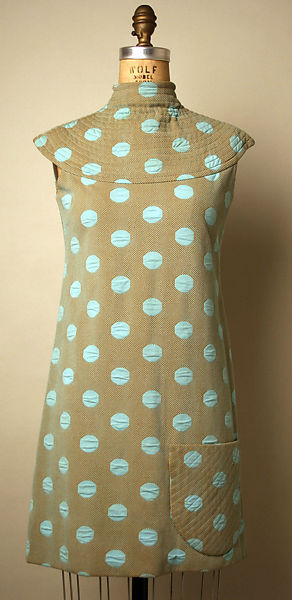
Ensemble by Serendipity 3, fall/winter 1966-67.
(source: Metropolitan Museum of Art)
7 notes
·
View notes
Text
P2-Interactive Learning Game
Brainstorming and initial thoughts


Lo-fi prototype





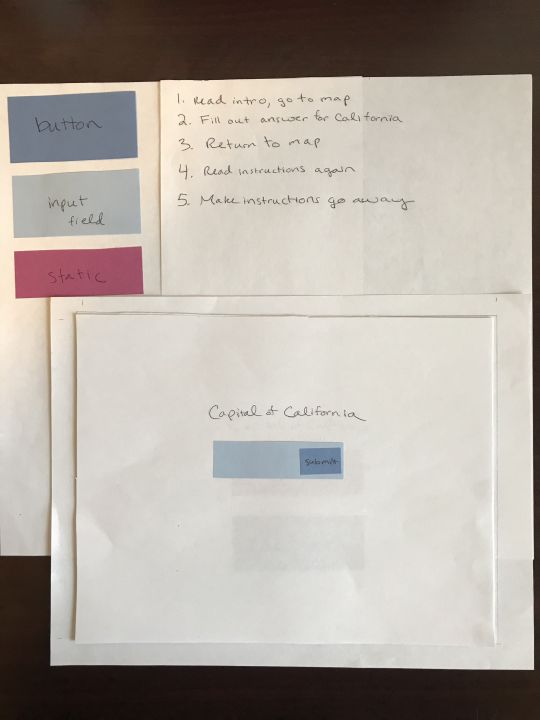



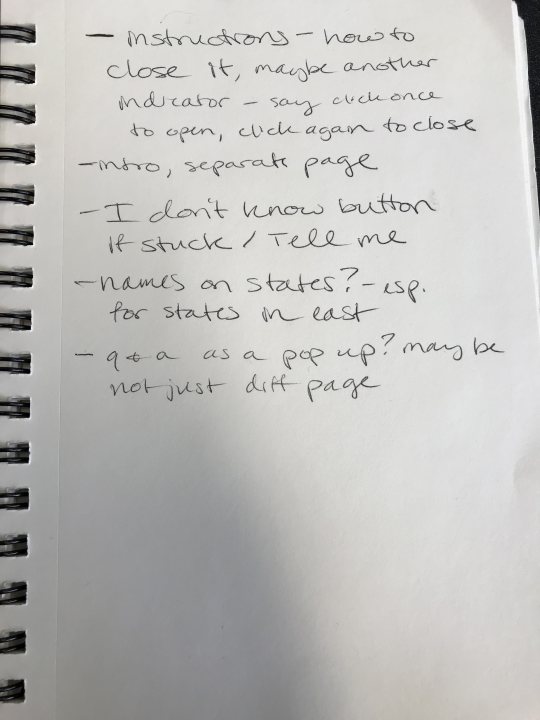
After receiving feedback from classmates and my professor, I decided to map out ten national parks with buttons instead of mapping out 50 states with buttons.
Moodboards
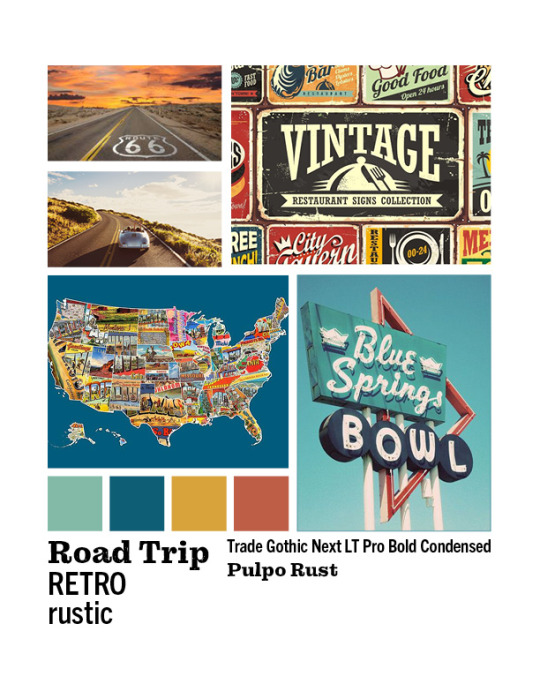

Style Tile

Static Digital Layout
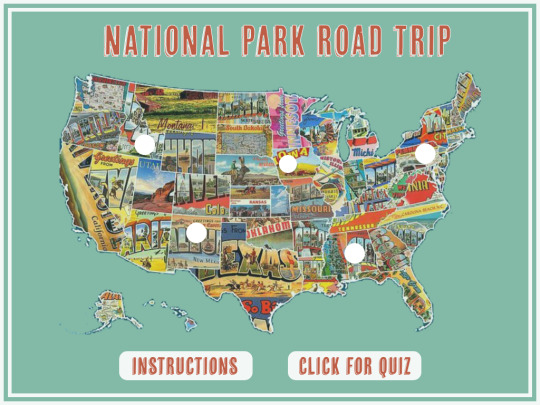

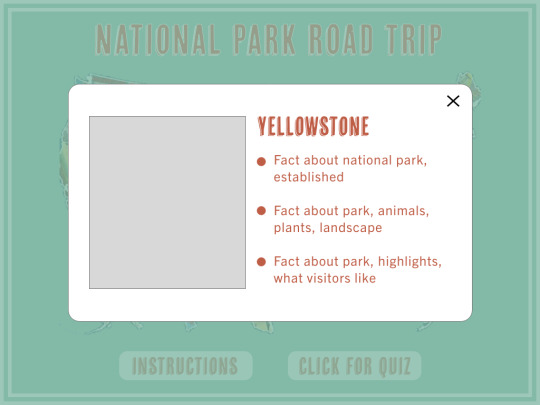
Notes


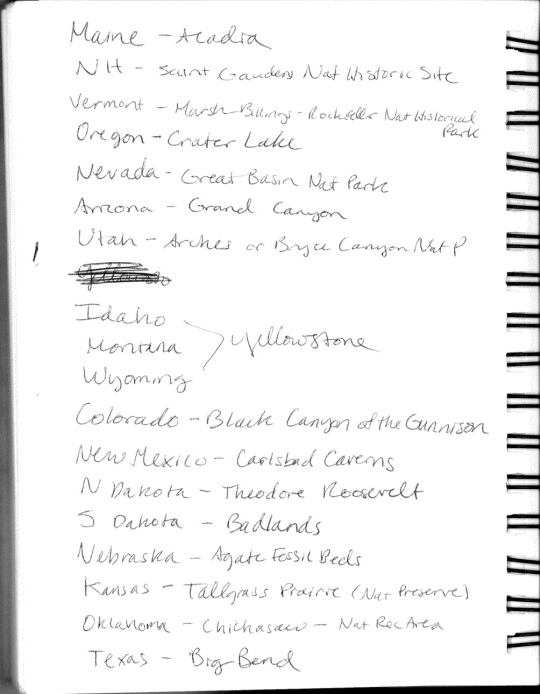
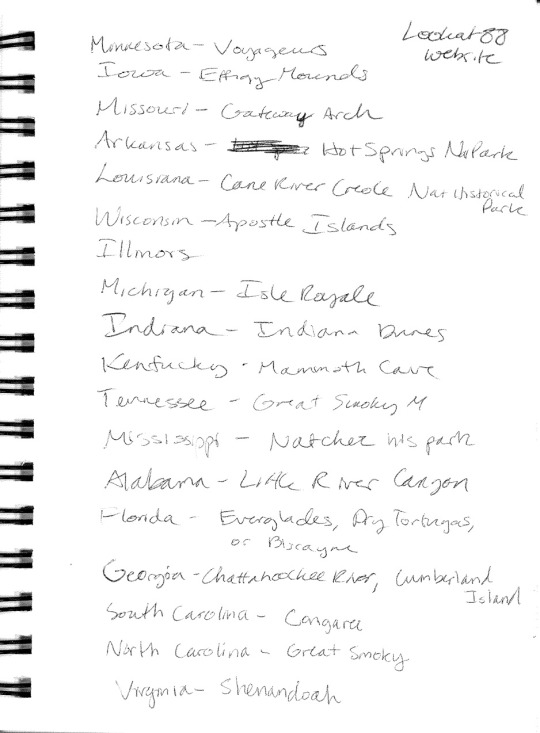


Olympic Park:
Officially national park in 1938.
Encompassing 922,651 acres, the park protects a vast wilderness, thousands of years of human history, and several distinctly different ecosystems, including glacier-capped mountains, old-growth temperate rain forests, and over 70 miles of wild coastline.
More than 1,100 species of plants live in Olympic's meadows and forests.
Just offshore, whales, dolphins, sea lions, seals, and sea otters feed in the Pacific Ocean. Invertebrates of countless shapes, sizes, colors and textures inhabit the tide pools.
Some species, like raccoons, beaver and mink, live mostly in the lowlands. Deer, elk, cougars and bears, range from valleys to mountain meadows. Park waters are home to some of the healthiest runs of Pacific salmon outside of Alaska. Over 300 species of birds live in the area at least part of the year, from tiny penguin-like rhinoceros auklets offshore to golden eagles soaring over the peaks.
Endemic species like the Olympic marmot, Olympic snow mole and Olympic torrent salamander are found here and nowhere else in the world.
Eight contemporary tribes of the Olympic Peninsula - the Hoh, Ozette, Makah, Quinault, Quileute, Queets, Lower Elwha Klallam, and Jamestown S'Klallam - have lived in this area and have strong relationships with the lands and waters within the park.
Yosemite:
Within its nearly 1,200 square miles, you can find deep valleys, grand meadows, ancient giant sequoias, a vast wilderness area, and more.
The expansive park’s 747,956 acres or 1,169 square miles, nearly 95 percent of which are designated Wilderness, are home to hundreds of wildlife species, and over a thousand plant species.
Yosemite supports more than 400 species of vertebrates, including fish, amphibians, reptiles, birds, and mammals.
Many waterfalls, specifically 2,425-foot Yosemite Falls that ranks as the tallest in North America, flowing down into the scenic Valley meadows.
Visitors can explore 800 miles of hiking trails and 282 miles of scenic roadways.
Yosemite is the nation’s 3rd national park, but it sparked the idea of national parks. Twenty-six years before it was a national park, President Lincoln signed the Yosemite Land Grant on June 30, 1864, protecting the Mariposa Grove and Yosemite Valley. It was the first time the government protected land because of its natural beauty so people could enjoy it.
Yosemite’s granite rock formations glow like fire at sunset. Sunlight illuminates El Capitan and Half Dome in brilliant reds and oranges.
Yosemite is one of the few places in the U.S. where you can see a rainbow at night. Yosemite is world-famous for its waterfalls and the rainbows that can appear in them. But very few people know about the park’s lunar rainbows.
Glacier Park:
Pristine forests, alpine meadows, rugged mountains, and spectacular lakes.
Over 700 miles of trails.
Glacier Park's varied climate influences and its location at the headwaters of the Pacific, Atlantic and Hudson Bay drainages have given rise to an incredible variety of plants and animals.
There are 276 species of birds are found in the park, Glacier hosts 6 species of amphibians, 71 species of mammals call Glacier home. There are only three species of reptiles in the park, with a fourth suspected to be present. It is nearly impossible to know how many species of insect live in Glacier, when a single rotting log alone could host thousands. Glacier's waters host a complicated mix of native and invasive species.
The park had over 100 glaciers when it was established in 1910. By 1966, 35 glaciers remained. In 2015, only 26 met the size criteria to be designated active glaciers. Snow avalanches, ice flow dynamics, and variations in ice thickness cause some glaciers to shrink faster than others. All the glaciers have receded since 1966.
Glacier National Park is a part of the world’s first international peace park. Vision for a park was to celebrate peace and friendship between the United States and Canada.
Yellowstone:
On March 1, 1872, Yellowstone became the first national park to enjoy the unique hydrothermal wonders. Preserved within are Earth's most active and diverse geysers, hot springs, mudpots, and fumaroles.
At 28,000 square miles.
Abundant and diverse: 67 species of mammals, 330 species of birds, 16 species of fish, 5 species of amphibians, 6 species of reptiles.
A volcano, geysers and other thermal features, earthquakes, and glaciers shape Yellowstone's landscape.
Half the world’s hydrothermal features are found at Yellowstone. Yellowstone National Park preserves more than 10,000 hydrothermal features -- an extraordinary collection of hot springs, mudpots, fumaroles, travertine terraces and -- of course -- geysers.
Microorganisms called thermophiles -- meaning “heat loving” -- live in these features and give the park its brilliant colors.
Old Faithful erupts more frequently than any of the other large geysers -- around 17 times a day.
World-renowned for its bison herds.
One of the world’s largest active volcanoes lies beneath Yellowstone. The first major eruption of the Yellowstone volcano occurred 2.1 million years ago and covered more than 5,790 square miles with ash.
Grand Teton:
Located in northwestern Wyoming
The elevation of the park ranges from 6,320 feet on the sagebrush-dominated valley floor to 13,770 feet on the windswept granite summit of the Grand Teton.
Long, snowy, and bitterly cold winters make the climate of Jackson Hole unforgiving. Coldest temperature ever recorded in Grand Teton National Park was -63°F, and snow often blankets the landscape from early November to May.
Grand Teton National Park was established in 1929 and then again in 1950. In 1929, President Calvin Coolidge went against enormous public opposition and approved the original 96,000-acre park, which encompassed the Teton Range and six glacial lakes. In 1943, President Franklin D. Roosevelt established the 210,000-acre Jackson Hole National Monument to protect the remaining federal lands on the valley floor. In 1950, President Harry S. Truman and Congress merged the monument, the national park and a 35,000-acre donation from John D. Rockefeller to create the 310,000-acre Grand Teton National Park.
Earthquakes gave rise to the 40-mile-long Teton Range, which sits on a fault line. The west block of land rose upward to form the mountains while the east block of land dropped down to form the valley called Jackson Hole. The Tetons are the youngest range in the Rocky Mountains and some of the youngest mountains in the world.
https://www.nathab.com/articles/us-national-parks/yellowstone/six-facts-about-grand-teton/
Zion:
Utah's First National Park.
Located in Washington, Iron, and Kane Counties in southwestern Utah. Within its 232 square miles are high plateaus, a maze of narrow, deep, sandstone canyons, and the Virgin River and its tributaries. Zion also has 2,000-foot Navajo Sandstone cliffs, pine- and juniper-clad slopes, and seeps, springs, and waterfalls supporting lush and colorful hanging gardens
Approximately 78 species of mammals, 30 species of reptiles, 7 species of amphibians, 8 species of fish, and 291 species of birds.
The geologic formations of Zion--formed over approximately 250 million years.
Before it was a national park, Zion was a national monument. The park was first protected in 1909 when President William Howard Taft designated Mukuntuweap National Monument using the power of the 1906 Antiquities Act. In the 10 years until it became a national park, it was expanded, and its name was changed to Zion.
Zion National Park's 2,000-foot sandstone cliffs are world renowned for their big wall climbs. Construction began on a 25-mile stretch of road to connect Zion to the Grand Canyon and Bryce Canyon. The 1.1-mile-long tunnel cuts through the vertical sandstone cliffs of Zion, blends in with the surrounding landscape and includes windows to provide views of Zion Canyon.
Grand Canyon:
Unique combinations of geologic color and erosional forms decorate a canyon that is 277 river miles (446km) long, up to 18 miles (29km) wide, and a mile (1.6km) deep.
On February 26, 1919, Grand Canyon became a National Park.
Is a World Heritage Site, encompasses 1,218,375 acres and lies on the Colorado Plateau in northwestern Arizona.
Over 1,500 plant, 355 bird, 89 mammalian, 47 reptile, 9 amphibian, and 17 fish species are found in park.
The Grand Canyon is bigger than the state of Rhode Island. The Grand Canyon is a mile deep, 277 miles long and 18 miles wide. While the park doesn’t include the entire canyon, it does measure in at a whopping 1,904 square miles in total. In comparison, Rhode Island is around 1,212 square miles.
Tucked within the Grand Canyon are an estimated 1,000 caves, and of those, 335 have been recorded. Even fewer have been mapped or inventoried. Only one cave is open to the public -- the Cave of the Domes on Horseshoe Mesa.
The Grand Canyon is one of the most visited national parks in the United States. An estimated 5.9 million people visit the Grand Canyon a year, making it the second most popular national park following just behind the Great Smoky Mountains of North Carolina and Tennessee.
The Grand Canyon was carved over some 6 million years. Geological activity and erosion by the Colorado River created the Grand Canyon as we know it today.
Rocky Mountain:
415 square miles encompass and protect spectacular mountain. environments. Trail Ridge Road crests at over 12,000 feet, along with over 300 miles of hiking trails, wildflowers, wildlife.
Rocky has a section just for butterflies. Over 140 species flutter around these high elevations.
Rocky Mountain is one of the nation’s highest national parks. Elevations from 7,860 feet to 14,259 feet.
Maze of evergreen trees covers the mountainsides in subalpine areas. Hidden among the trees are crystal-clear lakes and fields of wildflowers. Approximately one-third of this national park is above the limit where trees grow in northern Colorado (around 11,500 feet above sea level), creating the alpine tundra ecosystem.
Completed in 1932, Trail Ridge Road was called a "scenic wonder road of the world." The highest continuous paved highway in the nation, drivers will climb 4,000 feet in a matter of minutes.
Park is home to more than 60 species of mammals, including elk, bighorn sheep and moose. Park has more than 280 recorded bird species, six amphibians, one reptile (the harmless garter snake), 11 species of fish and countless insects, and a large number of butterflies.
Great Smoky:
World renowned for its diversity of plant and animal life, the beauty of its ancient mountains, and the quality of its remnants of Southern Appalachian mountain culture. America's most visited national park.
Encompassing over 800 square miles in the Southern Appalachian Mountains, no other area of equal size in a temperate climate can match the park's diversity. Over 19,000 species have been documented in the park and scientists believe an additional 80,000-100,000 species may live here.
One of the most stunning and rare inhabitants of the national park is the Eastern Hellbender Salamander, the 3rd largest salamander in the world. The Smokies are known as the Salamander Capital of the World and are home to 24 species of salamanders.
Bears inhabit all elevations of the park. Though populations are variable, biologists estimate that roughly 1,500 bears live in the park. Equals a population density of approximately two bears per square mile.
Over 1,500 kinds of flowering plants are found in the park, more than in any other North American national park.
Cades Cove is a broad, verdant valley surrounded by mountains and is one of the most popular destinations in the Great Smokies. Large numbers of white-tailed deer are seen, and sightings of black bear, coyote, ground hog, turkey, raccoon, skunk, and other animals are also possible.
Protected in the park are some 65 species of mammals, over 200 varieties of birds, 67 native fish species, and more than 80 types of reptiles and amphibians.
Acadia:
Seven peaks above 1,000 feet, 158 miles of hiking trails, and 45 miles of carriage roads with 16 stone bridges.
First established in 1919.
More than 47,000-acre preserve is located mostly on Mount Desert Island, a 108-square-mile coastal island shaped like a lobster’s claw. Other bits of Acadia are scattered on smaller nearby islands and on a peninsula jutting from Maine’s shoreline.
1,530-foot-high Cadillac Mountain, the tallest point on the eastern coast of the United States.
Thunder Hole, a semi-submerged cave off the coast of Mount Desert Island where crashing waves sound like bolts of thunder.
https://kids.nationalgeographic.com/explore/nature/acadia/#Acadia-lighthouse.jpg
Park has not always been know as Acadia National Park. It was first called Sieur de Monts National Monument (1916 – 1919). The name was than changed to Lafayette National Park until January 19, 1929 before it became Acadia National Park.
There are 26 different mountains within the park.
All info from:
https://www.nps.gov/index.htm
https://www.doi.gov
Progress on building site
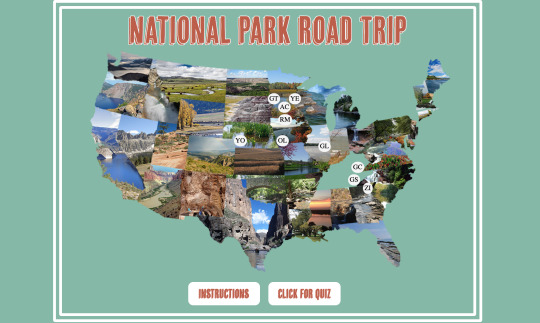
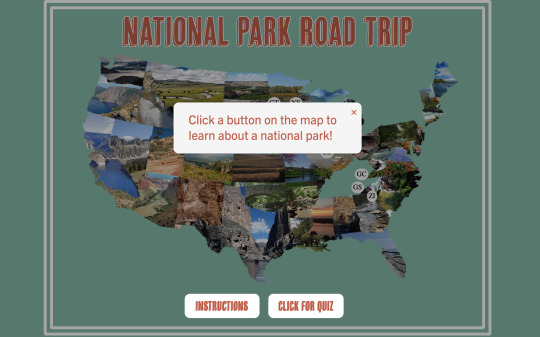


Final Coded Site

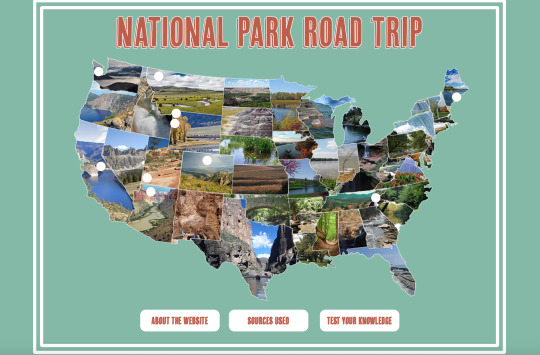
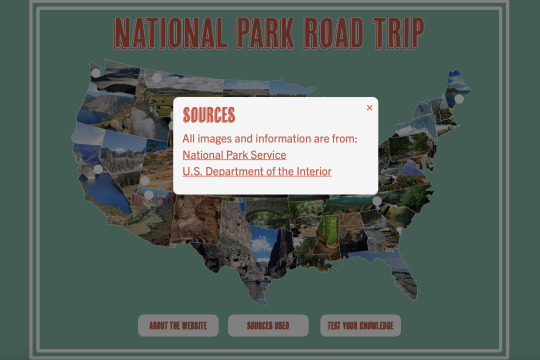
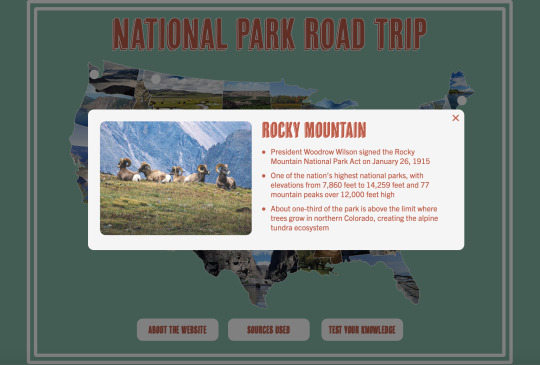

1 note
·
View note
Photo

By the time the first Camaro rolled off the showroom floor, Ford had sold nearly 1.3 million Mustangs. That was in the fall of 1966 - the first-gen Camaro being unveiled that September. A direct answer to Ford, GM engineered the car in just under two years, but the idea for the Camaro actually went back further, to 1962. A young stylist who’d go on to a big career, Irv Rybicki, pitched then Chevy chief “Bunkie” Knudsen on a sporty version of the Chevy II - but Chevrolet already had a sporty small car, the Corvair Monza, and the pitch went nowhere. When the Mustang vanquished the Corvair in 1964, Knudsen realized his error and the Camaro program began. With the Chevy II scheduled for replacement in 1968, the Camaro was piggy-backed onto that design and previewed its structure. Chief Chevy engineer Don McPherson, displeased with the ride of the original Chevy II, the basic layout of the Camaro would be a semi-unitized design to better insulate passengers from vibrations and noise. From the A-pillar back, it was a unibody, with the front end having a subframe. Engineer Alex Mair, later of Pontiac and GMC, led the development team. Four huge rubber donuts isolated the front subframe and gave the car a quiet, smooth ride. The cars used Chevy’s existing array of engines in 1967 up to 350cid, then adding the 396 in ‘68.. The styling, done under Rybicki and Dave Holls, took shape fairly quickly - in part based on the earlier proposal. Holls, speaking about the design in a promo film, later said it was meant to be curvy and unadorned - “a contrast to the slab look” and “designed to stay fresh for years,” but privately Rybicki was not proud of the rush job. Later on, he’d say it was a car done by a committee, because of all the changes made in the rush to produce it. A crude prototype, put together with old Chevy II parts, was ready by the winter of 1965 - the XP-836. Originally “Panther,” the name was changed by new manager Pete Estes to “Camaro,” in part because of the criticism GM faced about the Corvair - the 14th floor didn’t want anything too racy. The ‘67 and nearly identical ‘68 performed and sold well - but never sold as well as the Mustang. https://www.instagram.com/p/B-2VlHpg5fz/?igshid=re9yaioqjzji
0 notes
Text
Star Trek and So Much More: The Breakout TV Season of 1966-67
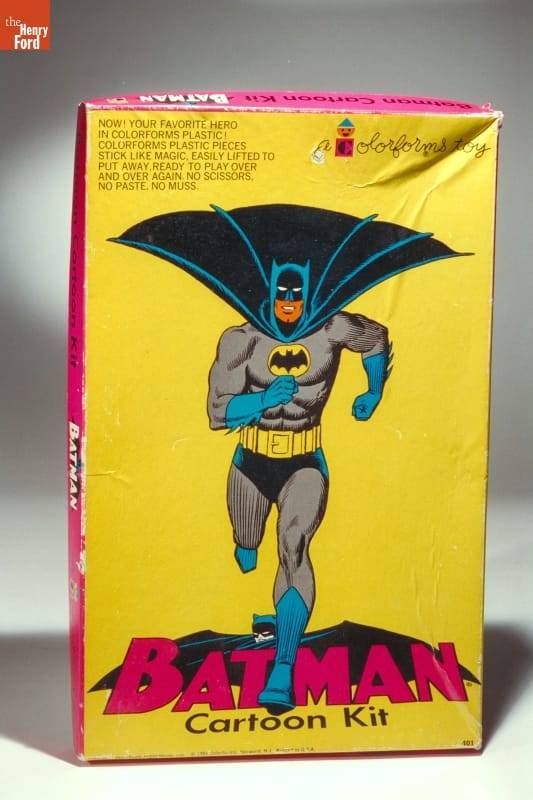
“Batman Cartoon Kit” Colorforms, 1966-68. THF 6651
It was the 1960s—the golden age of television. Some 95% of American homes boasted at least one TV. These were primarily black and white sets, as color TV was still out of the reach of many families. It’s hard to imagine now but there were only three channels at the time. Every year, the three networks (CBS, NBC, and ABC) vied for viewer ratings, shifting and changing shows and showtimes at two pivotal times during the television season—Fall and Winter.
As the Fall 1966 season unfolded, it became evident to TV viewers that something extraordinary was happening. Sure, there were the usual long-running sitcoms, like Green Acres, Petticoat Junction, and The Beverly Hillbillies. But change was in the wind. A new crop of programs emerged—colorful, fast-paced, poking fun at things that were supposed to be serious and exploring contemporary social issues.
Why the difference all of a sudden? Many of these shows were aimed at the youth audience, considered by this time an influential group of TV watchers. Others purposefully took advantage of the new color televisions. Sometimes show producers and creators were simply tired of the old formulas and wanted to break out of the box.
Let’s take a look at a few highlights from the 1966-67 TV season—starting with the staid and true and working up to the wild and wacky—and see what all the hubbub was about!
Walt Disney’s Wonderful World of Color (Sunday, 7:30-8:30 p.m., NBC)
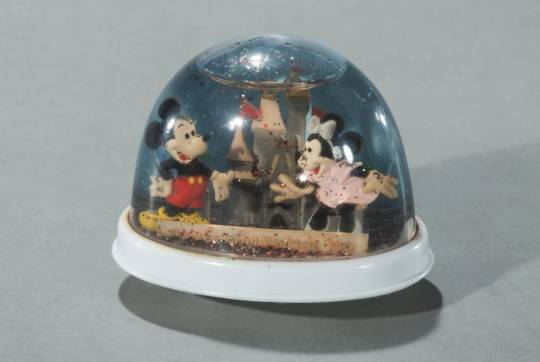
Snow Globe, “The Wonderful World of Disney,” 1969-79. THF174650
On Sunday nights since 1954, millions of Americans had tuned in to watch Walt Disney host his TV show, with a changing array of animated and live-action features, nature specials, movie reruns, travelogues, programs about science and outer space, and—best of all—updates on Walt Disney’s theme park, Disneyland. Since 1961, this show had been broadcast in color.
The 1966-67 season was particularly memorable because Walt Disney tragically passed away on December 15, 1966. But since the episodes had been pre-recorded, there was Walt still hosting them until April 1967. Viewers found this both comforting and disconcerting. Finally, after April, Walt was dropped as the host and, eventually, the show was retitled The Wonderful World of Disney. It ran with solid ratings until the mid-1970s.
Bonanza (Sunday, 9:00-10:00 p.m., NBC)

“Ponderosa Ranch” Mug, ca. 1970. THF174648
Viewership was high on NBC on Sunday nights at 9:00, as Bonanza was one of the most popular TV shows of all time. Running for 14 seasons and 430 episodes, this series about the trials and tribulations of widower Ben Cartwright and his three sons on the Ponderosa Ranch was an immediate breakout hit when it premiered in 1959, amidst a plethora of more run-of-the-mill prime-time westerns. Its popularity was primarily due to its quirky characters and unconventional stories—including early attempts to confront social issues. It was the first major western to be filmed in color and was the top-rated show on TV from 1964 to 1968. Bonanza ran until 1973.
The Man from U.N.C.L.E. (Friday, 8:30-9:30, NBC)

“The Man from U.N.C.L.E.” lunchbox and thermos, 1966. THF92303
Premiering in September 1964, The Man from U.N.C.L.E. took full advantage of the popularity of the spy genre launched by the James Bond film series. In fact, early concepts for it were conceptualized by Bond creator Ian Fleming. In this series, Napoleon Solo (originally conceived as the lone star) and Russian agent Ilya Kuryakin (added in response to popular demand) teamed up as part of a secret international counterespionage and law enforcement agency called U.N.C.L.E. (United Network Command for Law and Enforcement). Solo and Kuryakin banded together with a global organization of other agents to fight THRUSH, an international organization that aimed to conquer the world.
During this, the Cold War era, it was groundbreaking for a show to portray a United States-Soviet Union pair of secret agents, as these two countries were ideologically at odds most of the time. The Man from U.N.C.L.E. was also known for its high-profile guest stars and—taking a cue from the Bond films—its clever gadgets. In 1966, this series won the Golden Globe for Best Television Program and, building upon its popularity, spun off into two related double-feature movies that year. Unfortunately, attempting to compete with lighter, campier programs of the era, the producers made a conscious effort to increase the level of humor—leading to a severe ratings drop. Although the serious plot lines were soon reinstated, the ratings never recovered. The Man from U.N.C.L.E. was canceled in January 1968.
I Spy (Wednesday 10:00-11:00, NBC)
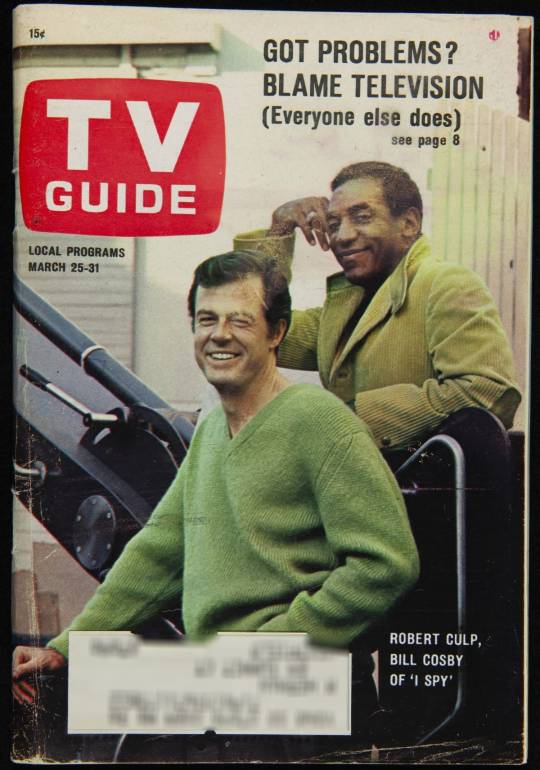
TV Guide featuring “I Spy” characters Robert Culp and Bill Cosby on cover, March 25-31, 1967. THF275655
One series that never opted for campy was I Spy, which starred Bill Cosby and Robert Culp playing two U.S. intelligence agents traveling undercover as international “tennis bums.” This series, which premiered in 1965, was also inspired by the James Bond film series and remained a fixture in the secret agent/espionage genre until cancelled in April 1968. I Spy, additionally a leader in the buddy genre, broke new ground as the first American TV drama series to feature a black actor in a lead role. It was also unusual in its use of exotic locations—much like the James Bond films—when shows like The Man from U.N.C.L.E. were completely filmed on a studio backlot.
I Spy offered hip banter between the two stars and some humor, but it focused primarily on the grittier side of the espionage business, sometimes even ending on a somber note. The success of this series was attributed to the strong chemistry between Culp and Cosby. Cosby’s presence was never called out in the way that black stars and co-stars were made a big deal of on later TV programs like Julia (1968) and Room 222 (1969).
Get Smart (Saturday, 8:30-9:00 NBC)

“Get Smart” Lunchbox, 1966. THF92304
Premiering in September 1965, Get Smart was a comedy that satirized virtually everything considered serious and sacred in the James Bond films and such TV shows as I Spy and The Man from U.N.C.L.E. Created by comic writers Mel Brooks and Buck Henry as a response to the grim seriousness of the Cold War spy genre, it starred bumbling Secret Agent 86—otherwise known as Maxwell “Max” Smart, along with supporting characters, female Agent 99 and the Chief. These characters worked for CONTROL, a secret U.S. government counterintelligence agency, against KAOS, “an international organization of evil.” Brooks and Henry also poked fun at this genre’s use of high-tech spy gadgets (Max’s shoe phone perhaps being the most memorable), world takeover plots, and enemy agents. Somehow, despite serious mess-ups in every episode, Maxwell Smart always emerged victorious in the end.
Get Smart was considered groundbreaking for broadening the parameters of TV sitcoms but was especially known for catchphrases like “Would you believe…” and “Sorry about that, Chief.” Despite a declining interest in the secret-agent genre, Get Smart’s talented writers attempted to keep it fresh until it was finally cancelled in May 1970.
Batman (Wednesday and Thursday, 7:30-8:00, ABC)

Toy Batmobile, 1966-69. THF174647
Bursting onto the scene in January 1966, Batman became an instant hit and took the country by storm. Batmania was in full swing by the Fall 1966-67 TV season. The series, based upon the DC comic book of the same name, featured the Caped Crusader (millionaire Bruce Wayne in his alter-ego of Batman) and the Boy Wonder (his young ward Dick Grayson in his alter-ego of Robin). These two crime-fighting heroes defended Gotham City from a variety of evil villains. It aired twice weekly, with most stories leaving viewers hanging in suspense the first night until they tuned in the second night.
This show successfully captured the youth audience, with its campy style, upbeat theme music, and tongue-in-cheek humor. Despite the fact that it verged on being a sitcom, the producers wisely left out the laugh track, reinforcing the seriousness with which the characters seemed to take the often absurd and wildly improbable situations in which they found themselves. The filming simulated a surreal comic-book quality, with characters and situations shot at high and low angles, with bright splashy colors and with sound effects, like Pow, Bam, and Zonk, appearing as words splashed across the action sequences on screen. The series was also replete with numerous gadgets and over-the-top props, with the Batmobile undoubtedly most memorable. Batman ran until March 1968, experiencing a significant ratings drop after its initial novelty faded.
Lost in Space (Wednesday 7:30-8:30, CBS)

“Lost in Space” Lunchbox and Thermos, 1967. THF92298
Loosely based upon the story of the Swiss Family Robinson, this TV series depicted the adventures of the Robinson family, a pioneering family of space colonists who struggled to survive in the depths of space in the futuristic year of 1997—as the United States was gearing up to colonize space due to overpopulation. But the family’s mission was sabotaged, forcing the crew members to crash-land on a strange planet and leaving them lost in space.
The show had premiered in September 1965 as a serious science fiction series about space exploration and a family searching to find a new place for humans to dwell. But, in January 1966, pitted against Batman’s time slot, Lost in Space producers attempted to imitate Batman’s campiness with ever-more-outrageous villains, brightly colored outfits, and over-the-top action. The plots increasingly featured Robby the Robot and the evil Dr. Zachary Smith. Viewers and actors alike strongly disapproved of this shift. The show lingered on until March 1968.
The Monkees (Monday, 7:30-8:00, NBC)

“Monkees” Lunchbox and Thermos, 1967. THF92313
Where other shows might have been lighthearted, campy, or tongue-in-cheek, The Monkees at times verged on pure anarchy. This series, which premiered on September 12, 1966, led off NBC’s prime-time programming every Monday night. It lasted only two seasons but during that time, its star shone brightly. The Monkees followed the experiences of four young men trying to make a name for themselves as a rock ‘n’ roll band, often finding themselves in strange, even bizarre, circumstances while searching for their big break. Aimed directly at the youth audience, the band members were characterized as heroes down on their luck while the adults were consistently depicted as the “heavies.”
The Beatles’ films A Hard Day’s Night and Help! inspired producers Bob Rafelson and Bert Schneider to create not only a show about a rock ‘n’ roll band but also to adapt a loose narrative structure (each member of the Monkees was trained in improvisational acting techniques at the outset of the show) and the musical sequences or “romps” that appeared each week. The series built a reputation for its innovative use of avant-garde filming techniques like quick jump cuts and breaking the fourth wall (that is, having the characters directly address the TV viewers). A well-oiled marketing machine behind the show also ensured that strong tie-ins were maintained with teen magazines, merchandise, and live concerts.
The Monkees won the Emmy for best comedy series during its first, the 1966-67, season. However, backlash was inevitable among critics and older teenagers when the Monkees admitted that they did not play their own instruments—although they clearly played them in their live concerts and, in fact, eventually had a falling-out with network executives about this very issue. Though the show was cancelled in 1968, it experienced a huge revival among younger audiences through Saturday morning reruns and especially with the 1986 MTV Monkees Marathon. Remaining band members Micky Dolenz and Mike Nesmith still attract large audiences of intergenerational fans at their live concerts, while reruns of their TV shows continue to draw new audiences.
Star Trek (Thursday, 8:30-9:30 NBC)

“Star Trek” lunchbox, 1968. THF92299
When Star Trek premiered on September 8, 1966, science fiction shows were not very advanced—or even thought of very highly. Star Trek’s closest competitor, Lost in Space, offered only shallow plots, one-dimensional characters, and fake sets. No one could imagine at the time that this rather low-key show would become one of the biggest, longest-running, and highest-grossing media franchises of all time. This series traced the interstellar adventures of Captain James T. Kirk and his crew aboard the United Federation of Planets’ starship Enterprise, on a five-year mission “to explore strange new worlds, to seek out new life and new civilizations, to boldly go where no man has gone before.”
Creator Gene Roddenberry, aiming the show at the youth audience, wanted to combine suspenseful adventure stories with morality tales reflecting contemporary life and social issues. So, to get by network scrutiny, he set the premise of the show in an imaginary future. With the freedom to experiment, he put in place one of TV’s first multiracial and multicultural casts and was able to explore through different episodes some of the most relevant political and social allegories on TV at the time. The stories were also considered exceptionally high quality for that era, involving believable characters with which viewers could both identify and sympathize. Unlike the gloomy predictions of most science fiction writings of the time, Roddenberry hoped that the futuristic utopia he created on Star Trek would give young people hope, that it would empower them to create a better future for themselves someday. Star Trek, with only modest ratings, lasted only three seasons. But it would go on to become a cult classic.
The Smothers Brothers Comedy Hour (Sunday, 9:00-10:00 p.m. beginning February 1967, CBS)
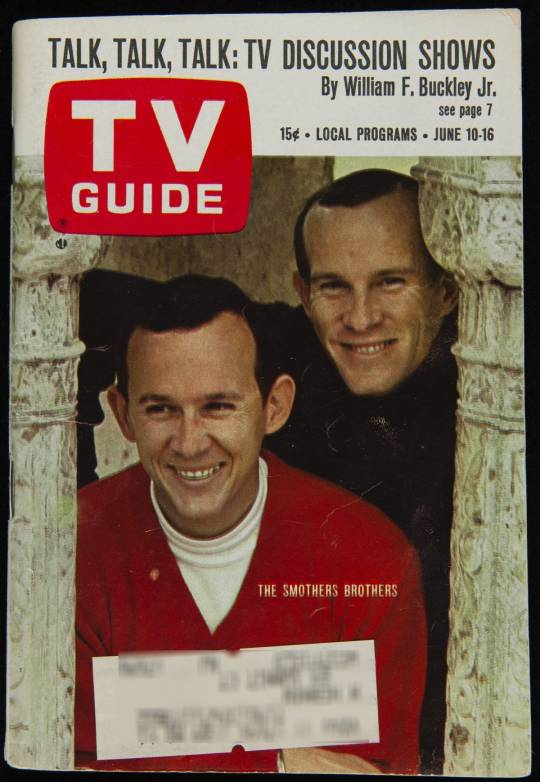
TV Guide featuring The Smothers Brothers on cover, June 10-16, 1967. THF275657
In Fall 1966, The Garry Moore Show, a variety show on CBS hosted by the aging radio and TV star, was no match when pitted against Bonanza—even with this, its first season in color. Network executives, at their wit’s end to try to attract viewership, decided the only way they could come up with a quick replacement was to substitute another variety show. In desperation, they landed on a simple variety series featuring the soft-spoken, clean-cut, non-threatening folk-music-playing Smothers Brothers. Considered a “young act,” an added bonus was that their show might capture the coveted youth audience. Little did they know what they were in for.
As the show evolved, the brothers not only became more politicized themselves but felt that they owed it to their young viewers to increase the show’s relevance, boldly addressing overtly divisive political and social issues. Their staff of young writers was only too happy to comply. Unfortunately, as a result, the brothers were continually at odds with the network censors until the show was finally cancelled after three seasons. In its continual conflicts with network executives, The Smothers Brothers Comedy Hour turned the variety show genre on its ear and paved the way for Rowan & Martin’s Laugh-In (1968) and, in pushing TV’s all-out rebellion against the status quo, led an explosive charge that resulted in 1970s shows like All in the Family (1971).
These are but a few highlights from the 1966-67 TV season. Some say that this was the greatest television season ever, a clear indication that TV had finally come of age. Because of shows like these, television would certainly never be the same again. And, come to think of it, neither would we!
Donna Braden, Curator of Public Life, was 13 years old during that memorable TV season and proudly wears her fan club button to every Monkees concert she still attends.
#1 Ford Daily | Đại lý – Showroom ủy quyền Ford Việt Nam 2019 Ford Daily là showroom, đại lý Ford lớn nhất Việt Nam: Chuyên phân phối xe ô tô FORD như: EcoSport ✅ Everest ✅ Explorer ✅ Focus ✅ Ranger… [email protected] 6A Đường Trần Hưng Đạo, Phường Phạm Ngũ Lão, Quận 1, Hồ Chí Minh 711240 0901333373 https://forddaily.com/ https://forddaily.com/xe/ https://forddaily.com/dai-ly/ https://forddaily.com/bang-gia/ https://forddaily.com/tra-gop/ #forddaily #dailyfordhcm #fordshowroomhcm https://www.google.com/maps/place/Ford+Daily/@10.7693359,106.696211,15z/data=!4m5!3m4!1s0x0:0x1f188a05d927f4ff!8m2!3d10.7693359!4d106.696211
1 note
·
View note
Text
#102: Watch every movie on the IMDB top 250 movies list
The goal of this list item was to expand my pop culture exposure I guess. I hadn’t seen most of these before. There were too many war movies and westerns on this list for my liking, but at least I can say I saw them. I put little <3 next to the ones I really liked. This list was created 31/12/15 when I finished started last year’s list.
1. The Shawshank Redemption (1994)
2. The Godfather (1972)
3. The Godfather: Part II (1974)
4. The Dark Knight (2008)
5. 12 Angry Men (1957)
6. Schindler’s List (1993)
7. Pulp Fiction (1994)
8. The Good, the Bad, and the Ugly (1966)
9. The Lord of the Rings: The Return of the King (2003)
10. Fight Club (1999)
11. The Lord of the Rings: The Fellowship of the Ring (2001)
12. Star Wars: Episode V – The Empire Strikes Back (1980)
13. Forrest Gump (1994)
14. Inception (2010)
15. One Flew Over the Cuckoo’s Nest (1975)
16. The Lord of the Rings: The Two Towers (2002)
17. The Matrix (1999)
18. Goodfellas (1990)
19. Star Wars: Episode IV – A New Hope (1977)
20. Seven Samurai (1954)
21. City of God (2002)
22. Se7en (1995)
23. The Silence of the Lambs (1991)
24. The Usual Suspects (1995)
25. It’s a Wonderful Life (1946)
26. Life is Beautiful (1997)
27. Leon: The Professional (1994)
28. Once Upon a Time in the West (1968)
29. Interstellar (2014) <3
30. Saving Private Ryan (1998) <3
31. Spirited Away (2001) <3
32. American History X (1998)
33. Casablanca (1942)
34. City Lights (1931)
35. Psycho (1960)
36. Raiders of the Lost Ark (1981)
37. Rear Window (1954)
38. The Intouchables (2011)
39. Modern Times (1936)
40. The Green Mile (1999) <3
41. Terminator 2: Judgement Day (1991)
42. The Pianist (2002)
43. Whiplash (2014)
44. The Departed (2006)
45. Back to the Future (1985) <3
46. Memento (2000)
47. Gladiator (2000)
48. Apocalypse Now (1979)
49. Dr. Strangelove or: How I Learned to Stop Worrying and Love the Bomb (1964)
50. Star Wars: The Force Awakens (2015)
51. Sunset Blvd. (1950)
52. The Prestige (2006)
53. Alien (1979)
54. The Lion King (1994) <3
55. The Great Dictator (1940)
56. The Lives of Others (2006)
57. Cinema Paradiso (1988) <3
58. Paths of Glory (1957)
59. The Shining (1980) <3
60. Django Unchained (2012)
61. The Dark Knight Rises (2012)
62. WALL-E (2008) <3
63. American Beauty (1999)
64. Grave of Fireflies (1988)
65. Aliens (1986)
66. Citizen Kane (1941)
67. North by Northwest (1959)
68. Princess Mononoke (1997)
69. Oldboy (2003)
70. Vertigo (1958)
71. Das Boot (1981)
72. Once Upon a Time in America (1984)
73. Star Wars: Episode VI – Return of the Jedi (1983)
74. M (1931)
75. Amelie (2001) <3 <3 <3
76. Witness for the Prosecution (1957)
77. Reservoir Dogs (1992)
78. Braveheart (1995)
79. A Clockwork Orange (1971)
80. Toy Story 3 (2010)
81. Requiem for a Dream (2000)
82. Taxi Driver (1976)
83. Double Indeminity (1944)
84. To Kill a Mockingbird (1962) <3
85. Lawrence of Arabia (1962)
86. Eternal Sunshine of the Spotless Mind (2004)
87. Full Metal Jacket (1987)
88. Amadeus (1984) <3
89. The Sting (1973)
90. Singin’ in the Rain (1952)
91. Bicycle Thieves (1948)
92. 2001: A Space Odyssey (1968)
93. Snatch (2000)
94. Monty Python and the Holy Grail (1975) <3
95. Inside Out (2015) <3
96. The Kid (1921)
97. Toy Story (1995) <3
98. L.A. Confidential (1997)
99. For a Few Dollars More (1965)
100. Inglorious Basterds (2009)
101: Rashomon (1950)
102. The Apartment (1960)
103. All About Eve (1950)
104. Indiana Jones and the Last Crusade (1989)
105. A Separation (2011)
106. Metropolis (1927)
107. The Treasure of the Sierra Madre (1948)
108. Scarface (1983)
109. Yojimbo (1961)
110. Some Like It Hot (1959)
111. Batman Begins (2005)
112. The Third Man (1949)
113. Unforgiven (1992)
114. 3 Idiots (2009)
115. Up (2009) <3
116. The Hunt (2012)
117. Raging Bull (1980)
118. Downfall (2004)
119. Good Will Hunting (1997)
120. Die Hard (1988)
121. The Great Escape (1963)
122. Chinatown (1974)
123. Heat (1995)
124. Sunrise (1927)
125. On the Waterfront (1954)
126. Pan’s Labyrinth (2006)
127. Sholay (1975)
128. Mr. Smith Goes to Washington (1939)<3
129. My Neighbor Totoro (1988)
130. The Bridge on the River Kwai (1957)
131. The Gold Rush (1925)
132. Ikiru (1952)
133. Ran (1985)
134. The Seventh Seal (1957)
135. Blade Runner (1982)
136. The Secret in Their Eyes (2009)
137. Lock, Stock and Two Smoking Barrels (1998)
138. Wild Strawberries (1957)
139. The General (1926)
140. The Elephant Man (1980)
141. Casino (1995)
142. Howl’s Moving Castle (2004)<3
143. Warrior (2011)
144. The Wolf of Wall Street (2013)
145. V for Vendetta (2005)
146. Gran Torino (2008)
147. Judgement at Nuremberg (1961)
148. The Big Lebowski (1998)
149. A Beautiful Mind (2001)<3
150. Rebecca (1940)
151. The Deer Hunter (1978)
152. Mad Max: Fury Road (2015)
153. How to Train Your Dragon (2010) <3
154. Cool Hand Luke (1967)
155. Gone with the Wind (1939)
156. Fargo (1996) <3
157. Trainspotting (1996)
158. Dial M for Murder (1954)
159. Incendies (2010)
160. The Sixth Sense (1999)
161. Into the Wild (2007) <3
162. It Happened One Night (1934)
163. Finding Nemo (2003) <3
164. Gone Girl (2014)
165. No Country for Old Men (2007)
166. The Thing (1982)
167. Mary and Max (2009)
168. Rush (2013)
169. The Maltese Falcon (1941)
170. Kill Bill: Vol. 1 (2003)
171. Life of Brian (1979)
172. Hotel Rwanda (2004)
173. The Wages of Fear (1953)
174. Platoon (1986)
175. There Will Be Blood (2007)
176. Butch Cassidy and the Sundance kid (1969)
177. Network (1976)
178. The Martian (2015) <3
179. The 400 Blows (1959)
180. Stand by Me (1986) <3
181. Persona (1966)
182. The Revenant (2015)
183. Touch of Evil (1958)
184. 12 Years a Slave (2013)
185. The Princess Bride (1987)
186. The Grand Budapest Hotel (2014) <3
187. In the Name of the Father (1993)
188. Amores Perros (2000)
189. Million Dollar Baby (2004)
190. Annie Hall (1977)
191. Ben-Hur (1959)
192. Shutter Island (2010)
193. The Grapes of Wrath (1940)
194. Wild Tales (2014) <3
195. Hachi: A Dog’s Tale (2009)
196. Nausicaa of the Valley of the Wind (1984)
197. Diabolique (1955)
198. Stalker (1979)
199. Jurassic Park (1993)
200. Gandhi (1982)
201. The Wizard of Oz (1939) <3
202. The Bourne Ultimatum (2007)
203. The Best Years of Our Lives (1946)
204. Sin City (2005)
205. Donnie Darko (2001)
206. 8 ½ (1963)
207. Before Sunrise (1995)
208. Strangers on a Train (1951)
209. Twelve Monkeys (1995)
210. The Terminator (1984)
211. The Truman Show (1998) <3
212. Groundhog Day (1993)
213. Monsters, Inc (2001) <3
214. Jaws (1975)
215. Memories of Murder (2003)
216. Rocky (1976)
217. The Battle of Algiers (1966)
218. Infernal Affairs (2002)
219. Harry Potter and the Deathly Hallows: Part 2 (2011)
220. The Avengers (2012)
221. Dog Day Afternoon (1975)
222. Barry Lyndon (1975)
223. Fanny and Alexander (1982)
224. La Haine (1995)
225. Guardians of the Galaxy (2014) <3
226. Throne of Blood (1957)
227. The Imitation Game (2014)
228. The King’s Speech (2010)
229. Ip Man (2008)
230. A Fistful of Dollars (1964)
231. High Noon (1952)
232. Prisoners (2013)
233. Pirates of the Caribbean: The Curse of the Black Pearl (2003) <3
234. Castle in the Sky (1986)
235. The Help (2011) <3
236. Roman Holiday (1953)
237. Notorious (1946)
238. Who’s Afraid of Virginia Woolf? (1966)
239. Papillon (1973)
240. Beauty and the Beast (1991)
241. Spring, Summer, Fall, Winter…and Spring (2003)
242. The Night of the Hunter (1955)
243. Anatomy of a Murder (1959)
244. Before Sunset (2004)
245. Catch me if You Can (2002)
246. Three Colors: Red (1994)
247. The Killing (1956)
248. La Strada (1954)
249. The Graduate (1967)
250. A Streetcar Named Desire (1951)
0 notes
Text
https://www.nytimes.com/2006/08/26/books/26paul.html
BOOKS
On the Road and Between the Pages, an Author Is Restless for Adventure
By ANNE GOODWIN SIDESAUG. 26, 2006
WHITE OAKS, N.M. — “I can’t live in towns anymore,” Gary Paulsen says, enjoying the view from his 200-acre ranch on the outskirts of an old ghost town in the Jicarilla Mountains, 40 miles from the nearest grocery store.
Living like a fugitive from society, the 67-year-old author says, is the only way he can think clearly. “I bought a house in a town near here, and a nice guy, a neighbor, came over to say hi,” he says, wincing. “It was too close.”
For generations of young, mostly male readers, Mr. Paulsen is one of the best-loved writers alive. With more than 26 million books in print, his name is practically synonymous with the wilderness adventure genre. He has won three Newbery Honor awards: for “Dogsong” (1985), “The Winter Room” (1989) and perhaps his best-known work, “Hatchet” (1987), about the only survivor of a plane crash in the Yukon.
“Gary Paulsen’s writing is very authentic, and kids sense that,” said Margaret Tice, coordinator of children’s services at the New York Public Library and a member of the Newbery committee. “He’s always lived his life on the edge and survived true adventures, but he’s not just an action man; he also knows how young people feel and think.”
Teri Lesesne, who teaches children’s literature at Sam Houston State University in Huntsville, Tex., has noted a special power in Mr. Paulsen’s work. “If I have a kid who’s a reluctant reader, all I have to do is hand him one of Gary Paulsen’s books,” she said. “It’ll change his life.”
Continue reading the main story
ADVERTISEMENT
Mr. Paulsen receives hundreds of letters a day. But his publisher can barely keep track of where to forward them, since Mr. Paulsen restlessly ricochets around the globe: training horses in New Mexico, running dogs in Alaska, riding his Harley across the American West, gunkholing around the South Pacific in his beat-up sailboat.
It’s deliberate: Mr. Paulsen is an unapologetic misanthrope, children excepted. “I don’t have anything against individuals,” he says. “But the species is a mess.” His throat tightens. “The last time I was up in Santa Fe, I wasn’t there 20 minutes before I brewed up, almost slugged a tourist on the steps of my wife’s gallery.” Ruth Wright Paulsen, his third wife, illustrated four of his picture books and a prose poem about an early American farm. “Now I try to be alone,” he says, pointedly.
Compulsively prolific, Mr. Paulsen produces a fresh book for young adults every few months, the vast majority of them novellas. His latest, “The Legend of Bass Reeves,” was published this month by Wendy Lamb Books, an imprint of Random House. It is identified as “the true and fictional account” of a slave who became the most successful federal marshal in American history.
“He’d ride alone into the center of hell and bring the men out, alive, if possible, or, if necessary, draped dead over a horse,” Mr. Paulsen writes. “He did this 3,000 times. Miraculously, he was never wounded. He rejected countless bribes, and when his own son killed his wife, he tracked his son down, brought him to justice and sent him to prison for life.”
All true. But Mr. Paulsen’s book is a novel, and he openly fictionalizes his protagonist, imbuing Bass Reeves with some of his own traits and experiences. The best writing, he says, is “like carving pieces off your self.” An outcast who survives abuse and a hardscrabble upbringing, Reeves is an expert shot with a sixth sense for tracking and a shamanlike kinship with animals. “Reeves was honest and honorable, and just flat tough,” Mr. Paulsen says, as if he’s fiercely defending a friend’s good name.
Compact, with wolf-blue eyes set in a grizzled face, Mr. Paulsen strongly resembles Ernest Hemingway. There are other parallels. Mr. Paulsen’s prose is spare and well acquainted with death. At various points in his life, he has been tormented by Papa-like demons: too much anger, too much drink, too much emphasis on virility, too many wives, too much loneliness.
Receiving the first overnight guests he’s allowed onto his desert ranch, Mr. Paulsen seems wary but not unfriendly. He wears tall boots and walks gingerly along the overgrown path beyond his door, pointing out rocks and crevices where he’s spotted five rattlesnakes in recent days.
This is bear and mountain lion country, which is why he often carries a snub-nosed .38. “Cats kill you before they eat you,” he says. “Bears like to hold you down and rip your buttocks while you’re still alive.”
All right then.
“Shall we eat?” Mr. Paulsen asks, pulling a few bloody steaks and a plastic vat of potato salad out of the fridge and opening a can of beans.
He is wearing the Iditarod belt that he earned in 1983 on his first try at the brutal 1,049-mile dog-sled race across Alaska, when he finished 42nd in a field of 73. Since then, his love affair with sled dogs has been one of the few constants in his peripatetic life.
“The dogs have affected me in all ways,” he says. “In my understanding of people, in my understanding of love and hate. Once you break down the interlock between species, it’s astonishing.”
Mr. Paulsen also keeps a 40-acre spread north of Willow, Alaska, where he breeds and trains dogs for the Iditarod (which he ran for the third time last March). “From the northwest corner of my land, there’s nothing for 4,000 miles,” he says, his voice quickening with excitement. “There’re no towns, no roads, no people all the way to Siberia.” And few of the provocations of modern society that make him “brew up.”
Mr. Paulsen is a prodigious ranter of the Luddite persuasion; it takes little to set him off. The Internet: “It’s just stupid, faster.” Lawyers: “Miserable human beings.” Organized sports: “Mindless dreck!” Television: “Intellectual carbon monoxide, but hey, TV’s are fun to shoot!”
He grew up poor and lonely in the small town of Thief River Falls, Minn. “My folks were the town drunks,” he says. “We lived in this grubby apartment building. My parents were brutal to each other, so I slept in the basement by an old coal-fired furnace.” He pretended to sell newspapers in pubs, raking the drunks’ money off the bar into his pockets when they were good and juiced. “I became a street kid,” he says. “Occasionally I’d live with aunts or uncles, then I’d run away to live in the woods, trapping and hunting game to survive. The wilderness pulled at me; still does.”
He said he was 13 when he stepped into a library for the first time. It was a frigid winter night. The library stayed open until 9 p.m., and its gold-tinted windows looked invitingly warm.
“The librarian typed my name on a card,” he remembers. “I looked at it and somehow that made me somebody.
Mr. Paulsen became a voracious reader, but not much of a student. “School didn’t work for me. I hated it,” he says. At 17, he forged his father’s signature to join the Army. Once, while he was testing missiles at White Sands, N.M., a Nike Ajax missed its target, locking onto a tagged buzzard instead.
In early 1965, he packed his Volkswagen Bug and drove to Hollywood, where he helped write dialogue for the television series “Mission: Impossible,” and the 1969 Steve McQueen film “The Reivers.” Then Mr. Paulsen left. “I started to like it too much,” he says.
In 1966, he checked himself into a cabin in the Minnesota woods, where he wrote his first book, “Some Birds Don’t Fly,” a collection of humorous essays about the missile industry.
Mr. Paulsen has lost count of how many books he has written since then. His Web site, garypaulsen.com, puts the tally at more than 175. Whether his subject is a slave who risks his life to teach others to read in “Nightjohn” (a book he adapted for a 1996 television movie), or an orphan on the streets of Juárez, Mexico, in “The Crossing” (a film version is now in preproduction), Mr. Paulsen is always writing to conquer his own dark, painful experiences.
“I’m a teller of stories,” he says. “I put bloody skins on my back and dance around the fire, and I say what the hunt was like. It’s not erudite; it’s not intellectual. I sail, run dogs, ride horses, play professional poker and tell stories about the stuff I’ve been through. And I’m still a romantic; I still want Bambi to make it out of the fire.”
Mr. Paulsen stopped writing for adults 10 years ago. “It’s artistically fruitless,” he fumes. “Adults are locked into car payments and divorces and work. They haven’t got time to think fresh. Name the book that made the biggest impression on you. I bet you read it before you hit puberty. In the time I’ve got left, I intend to write artistic books — for kids — because they’re still open to new ideas.”
A version of this article appears in print on , on Page B7 of the New York edition with the headline: On the Road and Between the Pages, an Author Is Restless for Adventure.
0 notes
Text
Audrey Hepburn’s Rare Personal Collection Up for Auction — Including Her Ballet Pumps
Audrey Hepburn is remembered for beauty, talent and style — oozing glamour on the big screen, and in per private life cutting a chic figure in minimalist fashion. Among some of her most memorable looks, Hepburn favored turtlenecks, slim-fit trousers and ballet flats. A selection of Audrey Hepburn’s ballet flats that will be up for auction at Christie’s this fall. Now, fans of the actress will have a chance to own her ballet pumps (estimated at around $2,000) and other personal items in a forthcoming auction by Christie’s, running Sept. 19 through Oct. 3 online. It’s the first time Hepburn’s family released the collection of belongings, which will also go on display to the public at Christie’s London flagship on Sept. 23. In Los Angeles, the auction house’s outpost will host a reception today, celebrating “Breakfast at Tiffany’s”— of which Hepburn’s annotated script will be up for bids, too. Autumn/Winter 1966/67 with the neck gently gathered, the hem trimmed with blue satin fringes, with matching blue silk belt. Estimate: £10,000-15,000 Some of the other items include a blue satin Givenchy dress, a Burberry trench coat and a gold lighter engraved: “My Fair Lady”— a nod to her iconic film. “We are thrilled to have been entrusted with the
Follow Footwear News on Twitter or become a fan on Facebook.
Read More...
from Footwear NewsFootwear News http://ift.tt/2fjtuaI
via IFTTT
0 notes
Text
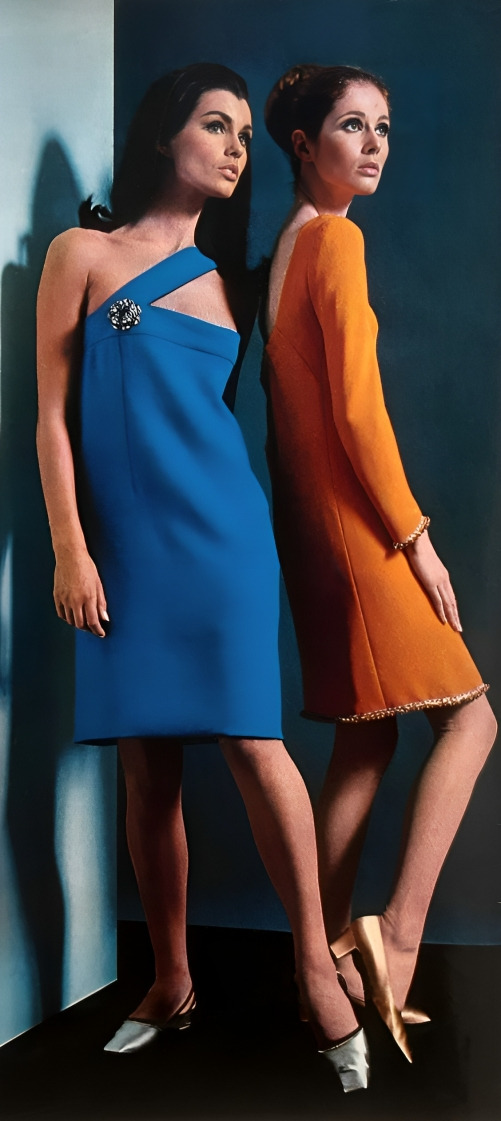
Haute Couture Collection Fall/Winter 1966-67
(l) Pierre Cardin, (r) Philippe Venet. Photo Marc Bicker.
Collection Haute Couture Automne/Hiver 1966-67
(g) Pierre Cardin, (d)Philippe Venet. Photo Marc Bicker.
#collection haute couture#french designer#french style#fashion 60s#1966-67#fall/winter#automne/hiver#pierre cardin#philippe venet#marc bicker
14 notes
·
View notes
Text
Petty, Shelby, Smokey, Garlits, Granatelli, and Parnelli Set The Pace For 1967
1967.
The minds of future automotive archeologists will surely be blown by all that occurred this year, on and off the track. We’d advise them that the hundreds of race cars frozen in black-and-white in the Petersen archive only begin to tell this season’s big stories. Investigating their builders, drivers, successes, and struggles for this final installment of Power Struggles led us down many rabbit holes, into some dead ends, and to the conclusion that American auto racing in 1967 was better than ever before—if not the best ever, period. Eleven of those months offered major events, at least in southern California. The best Grand National stock cars were already trading paint in January on Riverside’s road course. On a Saturday night in November, six teams of top Funny Cars—30 different drivers, plus standby alternates—squared off at brand-new Orange County International Raceway in the Manufacturers Meet.
There were no shortages of race cars or controversies in between. Two years after Chrysler pulled out of NASCAR and just as Ford was ending its 1966 boycott, both factories threatened to flee again in protest of Bill France’s acceptance of each other’s questionable “optional accessories” and one radically streamlined, supposedly independent Chevelle. While General Motors officially extended its own corporate ban of all motorsports into the new year, rabble-rousers Smokey Yunick and Curtis Turner sat on the Daytona 500 pole, more than a dozen race-ready examples of the recently released Camaro materialized for Sebring’s Trans-Am series opener, and aluminum rat motors overpowered the sporty-car competition in the U.S. Road Racing Championship and Can-Am series.
Thanks partly to a booming muscle-car craze, drag strip staging lanes were filled four and five days a week. Thirty-two-car, open-qualifying Top Fuel shows were not uncommon. So many “hot cars” entered NHRA’s February opener that the Winternationals instituted side-by-side qualifying, thus ending a time-honored, time-wasting tradition of single runs prior to eliminations. Another historic first was the all-dragster, one-day PDA Meet at Lions, headlined by 64 blown fuelers (though “only” 62 starters survived brutal qualifying attrition).
Oval-track traditionalists convinced that mid-mounted V8s were the worst idea since women in the pits tried every trick short of sabotage to convince USAC to outlaw the pistonless powerplant entered by the influential Granatelli brothers. The little car with the big engine could’a, should’a, would’a won Indy, but for the best-known bearing failure in history. Collateral damage beyond the one-off gearbox included the end of a Firestone winning streak dating all the way back to 1915. When the Firestone-shod STP Turbine crapped out four laps short of certain victory, A.J. Foyt sped past on Goodyears.
Goodyear provoked and fought tire wars on multiple fronts. M&H Racemasters had been standard dragster equipment for the decade since Marvin and Harry Rifchin rendered recaps obsolete by molding all-new slicks. That monopoly was broken by gifts of Blue Streak tires, cash, and rides in the original Goodyear blimp. Lots of pro racers jumped the blimpless M&H ship, including Don Garlits—who dramatically switched back for U.S. Nationals eliminations, chopped four tenths from his previous-best e.t., and won drag racing’s biggest event on Racemasters.
Most of these historic events and innovations are illustrated here by one or more archive photos. As in all previous installments of this series, unpublished outtakes enjoyed an edge over images found in the author’s private collections of Petersen’s big three monthlies: HOT ROD, Car Craft, and Motor Trend. (Digital HRM back issues are accessible at Club.HotRod.com by Platinum-level members of the HOT ROD Club.) For every negative approved for publication by editors, hundreds more were doomed to decades of darkness in steel drawers.
We’re going back for more of those. Another pictorial historical series, similar but different, debuts in the next HOT ROD Deluxe (Jan. ’18). We’ll begin by winding the clock back to 1955, when Robert E. Petersen instructed photographic director Bob D’Olivo to start tracking, numbering, and preserving any film exposed and processed by PPC employees. Subsequent years will be covered chronologically, one per issue, through the ’50s and into the mid-’60s. So, stick around. Your eyes will be among the first to see images previously seen only by the long-gone employees who shot, processed, rejected, or filed film that’s waited five or six decades to be appreciated.
Power Struggles Series
•Part 1, 1955: Nov. ’15 HRD
•Part 2, 1956: Jan. ’16 HRD
•Part 3, 1957: Mar. ’16 HRD
•Part 4, 1958: May ’16 HRD
•Part 5, 1959: July ’16 HRD
•Part 6, 1960: Sept. ’16 HRD
•Part 7, 1961: Nov. ’16 HRD
•Part 8, 1962: Jan. ’17 HRD
•Part 9, 1963: Mar. ’17 HRD
•Part 10, 1964: May ’17 HRD
•Part 11, 1965: July ’17 HRD
•Part 12, 1966: Sept. ’17 HRD
•Part 13, 1967: Nov. ’17 HRD
An odd, mostly unwritten, near-universal requirement for dragster drivers to complete winning rounds “without outside assistance” stemmed from an era of stripped-down rail jobs pushed by healthy youths in T-shirts and jeans. By 1967, a typical Top Fueler weighed upwards of 1,300 pounds, and its pilot wore a hot, heavy, aluminized firesuit. Some strips further demanded that helmets and even face masks remain in place. These program interruptions delighted fans, who cheered the pusher as he passed and again when his win light finally flickered, and proved irresistible to photographers and editors. Drag racing’s original jungle man, “Jungle” Larry Faust, advanced the hard way during Riverside’s 32-car HOT ROD Magazine meet after Don Prudhomme red-lighted and this car’s clutch fried on the starting line. He returned in time for the semifinals, but must’ve been all worn out, falling asleep against dark horse Glenn Brown (7.41/213.76 to 7.29/212.76), the eventual runner-up. Ironically, Faust’s frustrating outing generated the most publicity of a solid career driving fuel cars for Gene Mooneyham. Bob D’Olivo’s photo is an outtake to at least three different angles appearing in postrace coverage (June ’67 HRM; July ’67 CC).
Smacking a wall and shedding a front wheel just 15 laps into the Motor Trend 500 didn’t stop Curtis Turner from grinding the mile and a half back to Bud Moore’s pit. The damage proved irreparable, however, after rain arrived later this afternoon and NASCAR locked up the cars for a week, on jack stands. When the race resumed, teams were forbidden from any preparation beyond tire inflation. (See Apr. ’67 HRM & MT.)
Like you, we saw this and assumed that the flying ’58 Fairlane surely was done for the day, if not forever more. Research revealed that regional racer Frank Deiny miraculously bounced back for a second-place finish (to Oren Prosser) in Riverside’s Permatex 100 undercard. We also learned that Deiny drove Grand National cars, though never finishing higher than 30th, and is better known as the founder of Speedway Engineering.
Eventual Motor Trend 500 winner Parnelli Jones provided plenty of excitement enroute, spinning out both weekends in virtually the same spot, then recovering in Riverside’s notorious Turn Six. He became the first event champion not named Gurney since 1963’s inaugural. Note the unprecedented sheetmetal stretching that factory teams applied to FoMoCo’s new Fairlane-Comet intermediate. Beyond chopping, channeling, and flaring, some cars sported shortened A-pillars that drooped the roof edges but maintained stock windshield height in the center, where inspectors measured. The streamlining and tunnel-port 427s were loudly protested by Chrysler, which threatened a repeat of its 1965 boycott over NASCAR’s failure to enforce its own rules.
Even Ford’s powerful new tunnel-port 427 must’ve struggled to deliver the Wood brothers’ team to the winner’s circle. Leonard and Glen Wood, who’d crewed for Dan Gurney during his last three (of four straight) Motor Trend 500 wins, came aboard only after Cale Yarborough crashed their Fairlane in practice. The brothers brought along their stash of state-of-the-art, tunnel-port 427s prepared by Holman-Moody.
All we can tell you about this fluke photo is that it came from the shutdown area of Bee Line Dragway near Phoenix during AHRA’s Winter Nationals. None of our usual sources could identify the car or off-road driver, who’d presumably been blinded by oil gushing from the valve-cover breather. We say fluke photo because the preceding frames on this roll are all low-speed parachute shots of Funny Cars slowing to make a turnout. Instead of running for his life when the speeding fueler approached, CC staffer Bob Swaim turned, refocused, and stopped the action for us to enjoy, 50 years later. (See Apr. ’67 HRM & CC.)
It’s awfully tough to stump the network of geezers responsible for identifying numerous cars and people depicted in past Power Struggles, but nobody remembers this manpower struggle during NHRA’s Winternationals. (Help, readers?) Drag Racers Inc. members pointed out that the combination of blown Chrysler and skinny slicks indicates a Top Gas transplant. (See Apr. ’67 HRM, CC & MT; Aug. ’67 HRM, CC & MT.)
After taking a year off from rocking the Brickyard establishment, Mickey Thompson held a February press conference in Irwindale, California, to unveil his most-radical setup yet: a slingshot-style Indy roadster driven by the front wheels, steered by all four (a la hook-’n’-ladder), and pulled by a three-valve (two intake, one exhaust), all-aluminum engine based on a small-block Chevy. A single Crower roller cam in the conventional location actuated one exhaust and two intake valves per pent-roof chamber. Thompson also cast new injectors to squeeze between the dual rocker shafts. Gary Congdon was driving both here and at Indy, where neither this car nor a rear-engined backup got past practice sessions. CC’s Dan Roulston reported that the team ultimately combined surviving parts and pieces from both Huffaker cars into a hybrid that got stranded in line when qualifying closed. (See May & June ’67 HRM; May & Aug. ’67 CC.)
Only after scanning and enlarging this frame did Smokey Yunick’s silhouette emerge from what had looked like a weird shadow or film defect in the original negative. MT photographer Bob D’Olivo got the candid shot prior to the Daytona 500. Curtis Turner debuted the famous “second Chevelle” on the pole with a record average of 181.541, breaking Daytona’s 180-mph barrier and leading the rest of the field by fully three mph. After losing Smokey’s 404-inch “qualifier” motor in a 100-mile qualifying race, Turner stayed in the top five in the main event and led repeatedly before blowing the race engine, too. Nonetheless, this was the most-impressive, most-publicized effort by any Chevy race car since GM halted direct and indirect support in 1963. Mario Andretti went on to win for Ford, his only NASCAR victory. (See May & July ’67 HRM; May ’67 MT.)
It’s hard to believe now that such an itty-bitty spoiler caused a humongous ruckus, but Ford’s brass had been simmering since mid-1966, when Dodge rushed the aero aid into its retail catalog and NASCAR blessed it as a legitimate option. The added downforce transformed ill-handling Dodge Chargers into leaders virtually overnight. Chrysler countered that Ford’s new 427 heads, tunnel-port intake, and headers were not production items, nor were chopped, channeled, sectioned, widened Fairlane and Comet bodies. At Atlanta, Chrysler officials actually encouraged its factory teams to boycott the rest of the season—a plot unrealized only because the Pettys refused to go along with fellow owners Ray Nichels and Cotton Owens. Meanwhile, David Pearson’s Charger was getting checked against one of the plywood templates introduced at Daytona. (See June ’67 HRM; Jan. & June ’67 MT.)
Smokey’s slippery Chevelle met a violent end during Atlanta 500 practice. After lapping effortlessly at 151 mph (while other teams struggled for 149), Curtis Turner smacked the wall, got airborne, and flipped approximately 10 times. He was knocked out but reportedly unhurt. Yunick (at right, pointing, in a rare bareheaded photo) yanked the Tri-Powered 427 and tranny before getting the wreck crushed into a four-foot-square office decoration. (See June ’67 HRM & MT.)
We’re hoping that some of you—ahem—”mature” Midwesterners will fill us in about butchered Chevelle panels wrapped around an old altered chassis. We picked the shot from Detroit Dragway’s AHRA Grand Nationals to illustrate how Funny Car variety was probably peaking in this last season before rules makers began banning Jeeps and roadsters from major events. (See Aug. ’67 HRM.)
Determined to demonstrate that the traditional kings of the sport could draw big crowds without Funny Cars, novice promoter and United Drag Racers Association board member Doug Kruse persuaded Lions operator C.J. Hart to host an all-dragster show paying the largest cash purse ever, from $5,100 to the Top Fuel Eliminator to round money for all qualifiers. Imagine a single Saturday of qualifying and eliminations for 64 blown fuelers, 16 Top Gassers, and 16 injected Junior Fuel rails. The respective winners were Don Prudhomme, Bob Muravez (aka Floyd Lippencott Jr.), and longshot Tom Barres (Jr. Fuel)—plus the estimated 16,000 to 17,000 fans who arrived before Hart had to lock the gates of the overflowing facility two hours early. In addition to pounding out countless aluminum race-car bodies, Kruse designed and assembled the twin-engined Invader roadster that won back-to-back AMBR awards in 1967-1968. He passed away this June 19, just shy of the 50th anniversary of his inaugural, incomparable Professional Dragster Association Championships. (See Oct. ’67 HRM & CC.)
A broken axle instantly spoiled Mark Donohue’s day in Loudon, New Hampshire—but not a season that produced Trans-Am wins with Roger Penske’s Z-28 and the U.S. Road Racing Championship title in Penske’s Lola-Chevy Mark III. This car was the main testbed for joint 302 development by Traco, GM engineers, and Smokey Yunick (who later shared the recipe with HRM readers, Mar. ’68 issue). Vince Piggins, Chevrolet’s racing boss, is often credited for successfully mating 327 cranks to 283 blocks, though countless drag racers did it first, dubbing the resulting hybrid a 301. An entire injected-nitro category, Junior Fuel Dragster, was based on the combination (up to 310 cubic inches).
Sir Mick never could stay away from the salt for long. Getting back to Bonneville with a canopied Indy car should’ve made some news, but we haven’t found a single published photo or any mention of the effort. (See Nov. ’67 HRM.)
This classic Wendover, Utah, photo almost didn’t make the final cut for lack of IDs, but it’s just too cool to put back into the file drawer. Whoever they are, these bikers were responsible motel guests: Another frame on this roll reveals a protective tarp beneath the tools and the British double. (Do you think the leggy blonde is bored yet?)
We ran this scan past Don Garlits—who always remembers everything—but Big doesn’t know what prompted his reaction, nor whom he was signaling, at Indianapolis Raceway Park. Don is sure about the day it happened, pointing out the rotating M&H slicks borrowed from James Warren and Roger Coburn for Labor Day’s eliminations. After he and James both advanced out of the semifinals, Garlits famously offered to return the rubber, his opponent famously declined, and this extra-long (175-inch), super-light (1,170-pound) slingshot won the U.S. Nationals in a career-best 6.77 seconds. Immediately afterwards, he fulfilled a vow to shave his beard in front of fans if he ever ran in the sixes. (See Nov. ’67 HRM & CC.)
If forcing those newfangled Funny Cars into heads-up dragster classes was NHRA’s plot to eliminate them as early as possible, it backfired when Dick Jesse’s radically sectioned, blown GTO and Gene Snow’s injected Dart respectively trophied in BB/ and CC/Fuel Dragster at Indy to qualify for Super Eliminator (which Snow also won). “Mr. Unswitchable” really was: Jesse stuck with Pontiac power long after other Poncho heroes defected to 392 or 426 Chryslers.
Darlington’s Southern 500 was among Richard Petty’s 10 straight NASCAR wins between August 12 and October 1. In a season that will undoubtedly never be equaled, he won 27 of 48 races driving the same ’66 Belvedere that won 13 times the previous year. In the process, he broke another record that folks figured would never be threatened: 54 career wins scored by his daddy, Lee. Darlington Raceway’s enthusiastic flag waver must’ve been wearing insulated underwear on that hot hood. Directly below sat a destroked Hemi whose 404 cubic inches netted a 206-pound weight break for short tracks, improving handling and fuel mileage. (See Nov. & Dec. ’67 MT.)
The hard-fought Trans-Am series’ manufacturers’ championship came down to a Mercury-vs.-Ford showdown in the last of 12 races—and a missing gas cap—at Kent, Washington. Needing to finish one spot higher than the Mustangs, Dan Gurney’s factory Cougar fell back to third after acquiring a black-flag penalty for spewing fuel, a punctured rear tire, and a smashed windshield that forced him to push against the broken glass to see. In the absence of Jerry Titus’s wrecked Mustang, teammate Ron Bucknum held onto the second position (behind winner Mark Donohue) necessary for owner Carroll Shelby to secure a second title for Ford in Trans-Am’s second season. (Drivers would not be awarded individual points until 1972.)
Joseph Granatelli impressed the L.A. media by firing up the turbine (note exhaust heat) at a press party in early April, then drove the car from of the stately Ambassador Hotel’s courtyard to a makeshift photo studio nearby. HRM’s Ray Brock and Eric Rickman teamed up for the static photography.
The sexy skin was among the earliest computer-designed, wind-tunnel-tested race-car bodies. Racing weight of 1,750 pounds was distributed 60/40, left/right, and 45/55, front/rear.
A unique four-wheel-drive system evolved from the mechanism custom-built by Ferguson Formula in England for the previous season’s STP Novi. The engine’s projected four-to-six mpg (doubling Indy’s typical fuel mileage) enabled a small, 48-gallon kerosene load to be strategically distributed inside the chassis.
Little-known factoid: Those perfect rows of rivets were proudly installed by Jim Lytle, who previously built and drove the pair of Allison-powered ’34 Fords known as Big Als I and II. The youngster tried but failed to convince boss Ken Wallis that a race car—unlike the aircraft he’d designed—needed U-joints in the drivetrain to ensure survival throughout practice laps, qualifying, and a 500-mile race. He said he quit after Wallis took issue with the suggestion and demeaned him as “a drag racer, not an engineer” who “should do more riveting and less talking.” Lytle predicted to friends that the car would be fast, but would not finish.
Publisher Ray Brock’s Aug. ’67 HRM editorial lobbied USAC not to penalize future turbines for performance that might’ve been achievable with conventional Indy power: “We think that a Ford or Offy engine in this very same chassis would outrun the rear-engined cars.” A left-foot-operated flapper later attached to the exhaust pipe functioned as an air brake, partially compensating for the absence of compression braking.
In one year, Novi diehards Andy (in suit), Joe, and Vince Granatelli graduated from perennial backmarkers to feared frontrunners while generating priceless publicity for STP.
Note how the turbine’s intense exhaust heat distorts the background. The round shield enabled crewmen to access nearby components during pit stops.
When Andy rushed to meet his coasting driver on the track, the turbine was running perfectly, but no power was reaching the wheels. Only later did he realize that had his crew left the disabled car where it stopped, instead of pushing it back to the pits, Parnelli Jones would’ve been awarded third place, instead of sixth.
The post Petty, Shelby, Smokey, Garlits, Granatelli, and Parnelli Set The Pace For 1967 appeared first on Hot Rod Network.
from Hot Rod Network http://www.hotrod.com/articles/petty-shelby-smokey-garlits-granatelli-parnelli-set-pace-1967/
via IFTTT
0 notes
Link
For the first time since the winter of 1982-83, Binghamton, New York, may finish with more snow than any other city in the Empire State in what has been a historic season for this small city in New York's southern tier.
Through April 11, Binghamton has received 135.2 inches of snow, a slim 0.1 inches above Syracuse's seasonal total.
Last Friday, meteorologists at the National Weather Service office in Binghamton measured 0.9 inches of snow at Binghamton Regional Airport, enough to push the city ahead of its neighbor 70 miles to the north; only 0.3 inches of snow fell that day at Syracuse Hancock Airport. These airports are the official snowfall measurement sites for their respective cities.
Winter Storm Argos kicked off the winter for both Binghamton and Syracuse. At the time, Argos was Binghamton's heaviest snowstorm in more than 60 years of records with 27.6 inches recorded at Binghamton Regional Airport in a 72-hour period ending around midday on Nov. 22.
In Syracuse, Argos was a record snowstorm for the month of November as 25.1 inches of snow piled up at the airport Nov. 20-22.
Less than four months later, Winter Storm Stella topped Argos's record in Binghamton, pummeling the city with 35.3 inches of snow on March 14 and 15. Syracuse wound up with 24.4 inches of snow from Stella.
This late-season snowstorm pushed Binghamton to its snowiest winter on record, with 131.7 inches accumulated by the end of Stella. The previous record-snowiest season in Binghamton was 131.3 inches in 1993-94.
Stella's snowfall exceeded what Binghamton received all of last winter when a meager 32 inches piled up and ranked as the least snowy season on record there. The city's seasonal average for snowfall is 83.4 inches.
Cars and street buried by snow from Winter Storm Stella in Binghamton, New York, March 15, 2017. (Wally Dion/Instagram)
Although winter is over for the majority of the U.S., Syracuse averages 3.8 inches of snow in April and 0.1 inches in May, so we can't declare Binghamton the winner just yet. Binghamton averages 4.3 inches and 0.1 inches in those respective months.
Snowfall this winter was above average in Syracuse, but nowhere near the snowiest on record, as it was in Binghamton. The 1992-93 snow season brought 192.1 inches to the Salt City, well above the seasonal average of 123.8 inches.
Elevation will play a key role in the snowfall race over the remainder of the snow season. Binghamton Regional Airport is located at 1,636 feet above sea level, whereas Syracuse Hancock Airport is only at 410 feet.
Accumulating snow is very dependent on elevation this late in the season since temperatures may be cold enough for snow in higher elevations, but low elevations, such as Syracuse, will usually be warmer and could see mostly rain instead of snow.
It will be interesting to see if Binghamton's elevation works in its favor if any additional snow falls in the weeks ahead.
According to GoldenSnowball.com – a contest between Syracuse, Rochester, Buffalo, Binghamton and Albany each winter – Binghamton has only been the snowiest New York city three of the past 53 winters: 1964-65, 1966-67 and 1982-83. Syracuse has been the snowiest for a total of 39 winters, including every winter since 2012-13.
#Binghamton#binghamton ny#binghamton new york#snow#snowy new york#Upstate New York#upstateny#upstatenewyork#2017#2016#snowrecords#snow records#record snow#record snowfall#skiing#ski#snowboarding#snowboard#syracuse#buffalo#rochester#syracuse ny#buffalo ny#rochester ny
0 notes
Text

❤️❤️❤️❤️❤️
Chanel Haute Couture Fall/Winter 1966-1967, sandals by André Massaro.
Chanel Haute Couture Automne/Hiver 1966-1967, sandales de André Massaro.
#chanel haute couture#fall/winter#automne/hiver#1966-67#fashion 60s#french designer#french style#andré massaro#two tone#deux tons
4 notes
·
View notes
Text
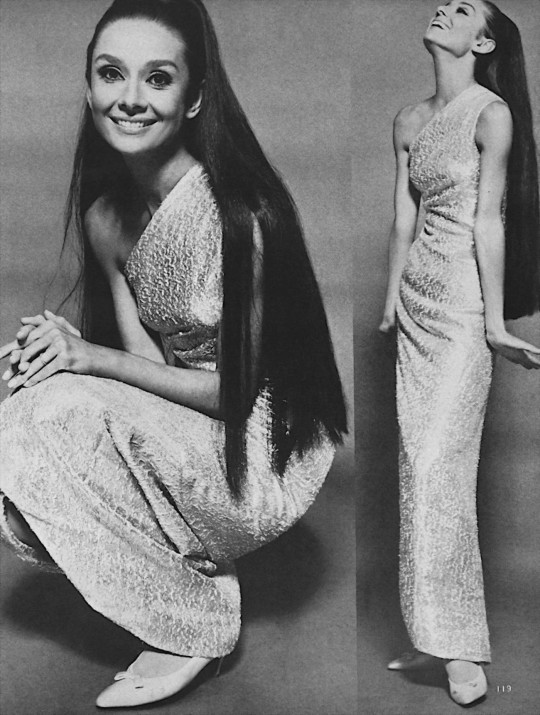
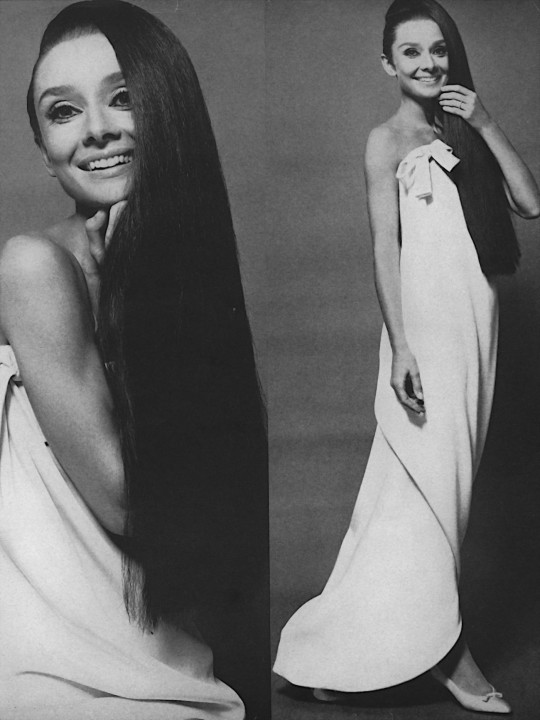
US Vogue Oct 15, 1966 ❤️❤️❤️❤️❤️️
Audrey Hepburn and the New Givenchy Evenings
Photo William Klein
Hair Alexandre
vogue archive
#us vogue#october 1966#fall/winter 1966 67#fashion 60s#haute couture#hubert de givenchy#givenchy#audrey hepburn#american star#muse#evening gown#chic gown#elegant actress#william klein#alexandredeparis
314 notes
·
View notes
Text
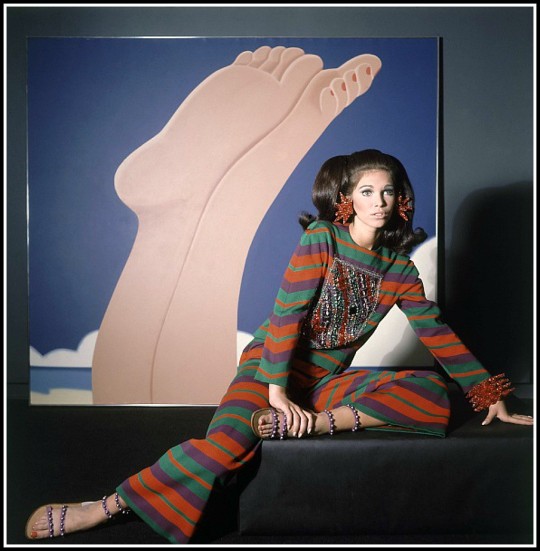
US Vogue November 15, 1966 ❤️❤️❤️❤️❤️
Model Ann Turkel in Roman-striped evening pajamas by James Galanos, earrings by Michael Hic, sandals by Dal Co.
Photo by Horst.
painting by Tom Wesselman "Seascape #5
#us vogue#november 1966#fall/winter 1966 67#fashion 60s#swinging sixties#horst p. horst#james galanos#ann turkel#michael hic#dal co#tom wesselmann#seascape#chic evening pajamas#elegant evening set
113 notes
·
View notes
Text

A model wearing Boe Jests pink pants and orange shirt.
Photo Sante Forlano for Glamour Magazine Nov 1, 1966 ❤️❤️❤️❤️❤️
#boe jests#pink pants#orange shirt#november 1966#fall/winter 1966 67#fashion 60s#swinging sixties#sante forlano#glamour magazine#60s style
82 notes
·
View notes